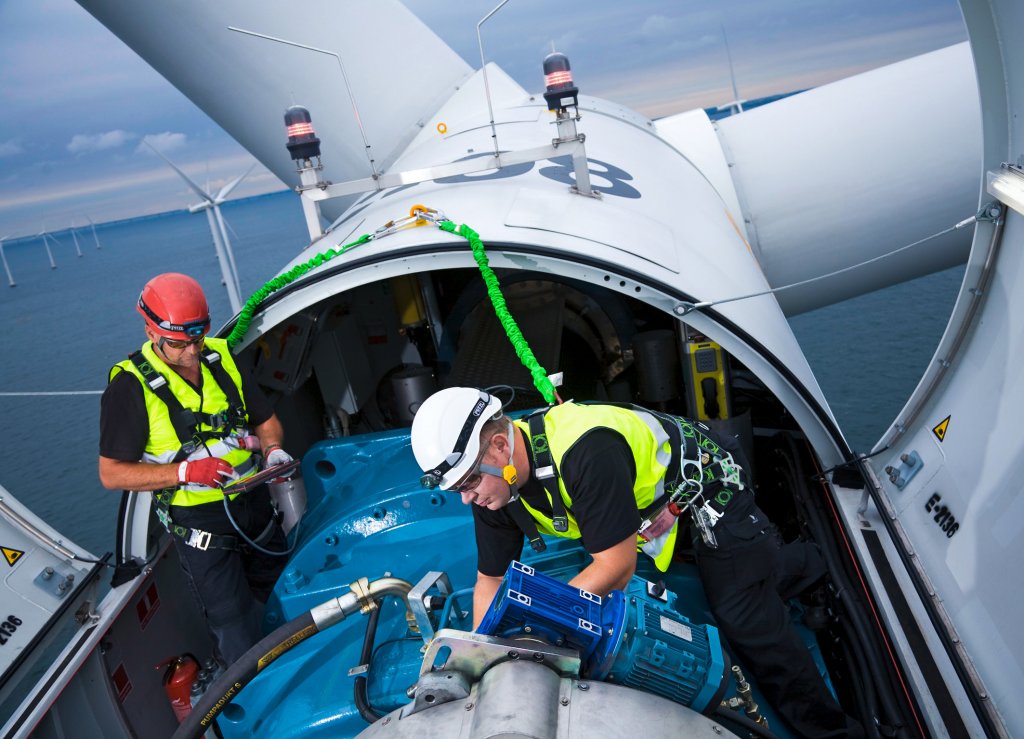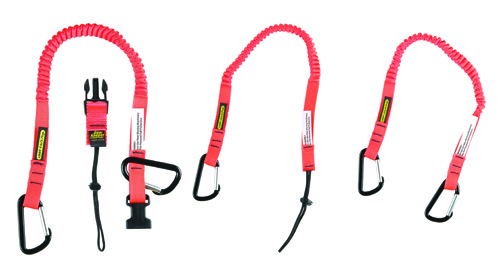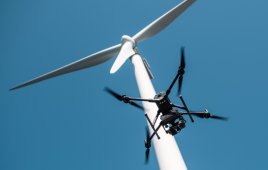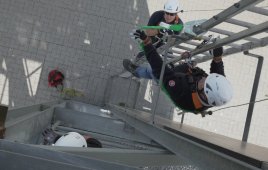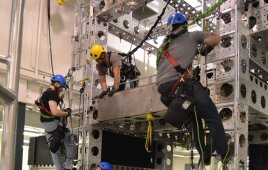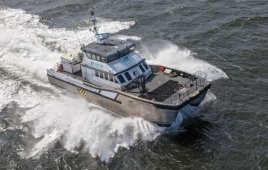By John Salentine | Vice President
Hammerhead Industries
(Gear Keeper)
Wind turbine blades require year-round monitoring, maintenance, and repairs to ensure maximum production and efficiency. As of 2014, there were an estimated 700,000 blades in operation globally with an average of 3,800 incidents of annual blade failure, according to a report released from renewable energy insurance specialists, GCube Underwriting. With a failure rate of 1:184, the company noted that this figure is increasing as wind developers reach more remote locations in the developing world.
Keeping blades in good condition is vital to a turbine’s ability to generate power and revenue, and this responsibility lies heavy on the shoulders of maintenance and repair engineers. If not maintained, damaged blades can significantly cost a wind farm owner and pose a serious threat to nearby people, wildlife, and property.
Working at heights also poses its own safety risks to wind personnel, however, and should be a priority for any company in the industry. Falls are among the most common causes of serious work related injuries and deaths, and there are some basic safety standards that must be adhered to (learn more here).
Similar regulations for tethering or tools at heights, commonly used in the wind industry, are sorely lacking from these standards. Developing a company standard and a safety program is, therefore, essential to help minimize risks to workers, onsite personnel, and the environment.
Setting a standard
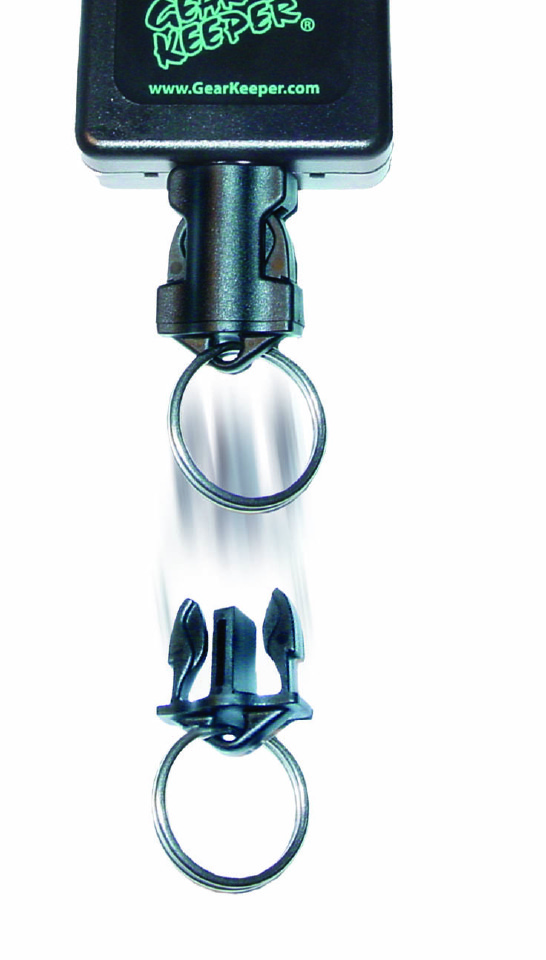
To ensure the right tool and right fit, look for manufacturers that specialize in equipment for the wind industry.
Unlike most engineering tasks, where there are protocols to guide workers and proven methods to follow, tool tethering is a fairly new expectation. Currently, there aren’t any national regulations or checklists from the American National Standards Institute (ANSI) or from the Occupational Safety & Health Administration (OSHA). Although OSHA recently revised their amendment for personal protective equipment (PPE) for employers that operate or maintain electric power generation, it hasn’t done so for tools or tethering for workers at heights.
For this reason, wind energy companies with personnel that routinely work at heights should develop an internal safety and fall protection program. A personalized “tools at heights” program, for instance, could ensure safety concerns are met and that the ergonomics of tethering are addressed. Providing personnel ongoing tips and training can help with worker compliance, which can sometimes be an issue. It’s also important to ensure employees have access to the right tools and properly fitted gear.
Size matters
Many equipment companies offering personal fall arrest systems carry a basic tether with two or three sizes in stock. More often than not, these tethers will be inappropriate for work at heights on a wind turbine’s blade. Tethering devices that limit mobility, recoil too quickly, or require too much resistance upon extension, for example, may result in injury.
Instead look for manufacturers specializing in equipment for the wind industry. Engineered tethering systems should be ergonomically sound and come with built-in safety margins that are rated by tool weight and application. Some manufacturers even offer assistance with safety programs, helping engineers develop the right program and training for their company to ensure employee compliance.
Successful tethering
Ordering the right tools for the job can be a time-consuming and overwhelming process, never mind deciding on additional tool tethers for safety. The key is to start off small.
For example, first categorize the tools for use at a jobsite and consider those that have a high “drop” potential, meaning they drop easily or commonly when at heights. Some of the most commonly dropped tools are the basics such as hard hats, tape measures, and cell phones.
Next, weigh the tools and classify whether they can be attached to a person or need to be anchored to a structure.
Once the tools are categorized, then select the appropriate tethers. Some tools must be tethered for safety while others cannot be. It depends on the working environment, equipment, and related safety concerns, so tethering options will vary per project.
The more common tool tethering options are as follows:
- Wrist lanyards: For tools up to 2 lbs to help avoid tool entanglement or short drop-length issues.
- Retractable tethers: For tools up to 2 lbs to help avoid tool entanglement issues when multiple retractable lanyards are in use.
- Personal tethers: For tools up to 10 lbs to remain attached to a person.
- Anchored tethers: For tools over 10 lbs to remain attached to a structure.
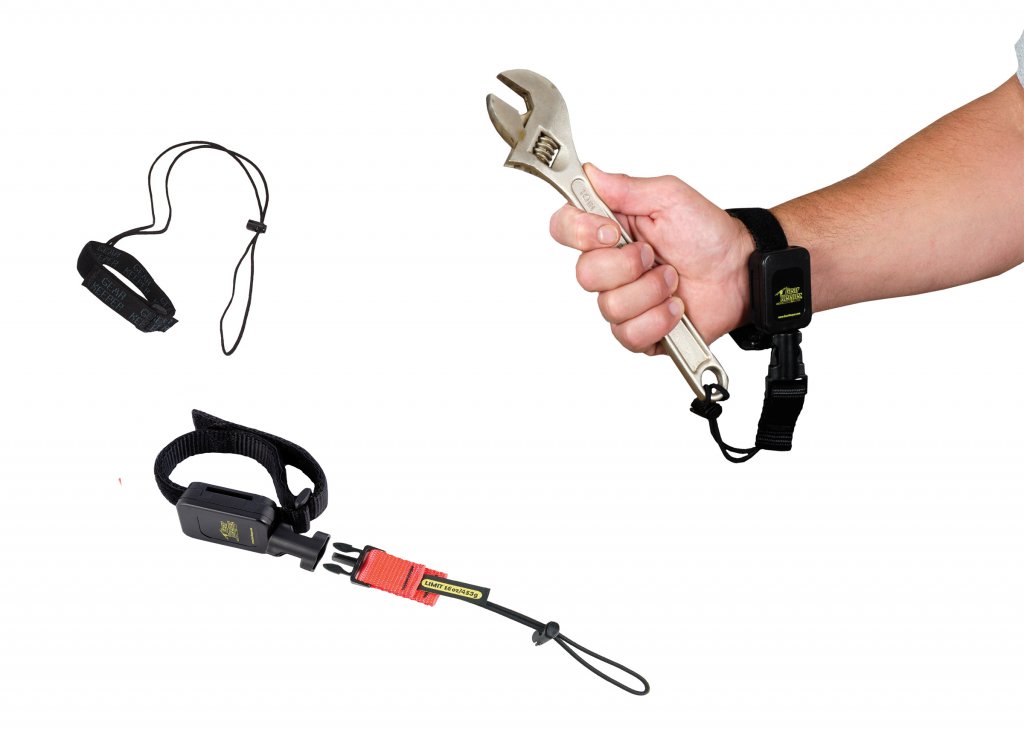
Wrist lanyards secure lighter tools (up to 2 lbs) to a worker’s wrist to help avoid tool entanglement or short drop-length issues.
A successful tethering solution is one that offers protection against dropped or left behind tools without hindering employee productivity or motivation. Here are some issues to consider when compiling a “tools at heights” safety program:
- It’s important to avoid loose or dangling tethers when moving machinery, working in close quarters, or when climbing and repelling. Consider using retractable tethers whenever possible. They keep tools close to the body when stored while still allowing complete accessibility when in use.
- When deciding on the tools and the tether to use, first calculate how much weight can be safely attached to a person or a structure. This is important because the tool weight, the drop length of the tether, and the dynamic loads on the person, their fall protection apparatus, or the anchor point can vary per person and per project, seriously impacting safety measures.
- Safe tool tethering is not a one-size-fits-all solution—a common mistake made by many companies. A “tools at heights” program can’t properly be developed by calling a local distributor and ordering tethers without first defining the specifications, and these might vary per jobsite.
A good safety program requires dedication and proper implementation, including ongoing training and compliance checks. It also includes the right equipment. The outcome, however, is well worth a company’s time and resources.
To ensure wind turbine blades keep turning and successfully generating power, it’s best to first start with ensuring proper protection for those workers willing to risk safety for a job well done at heights.
A guide to safe tethers
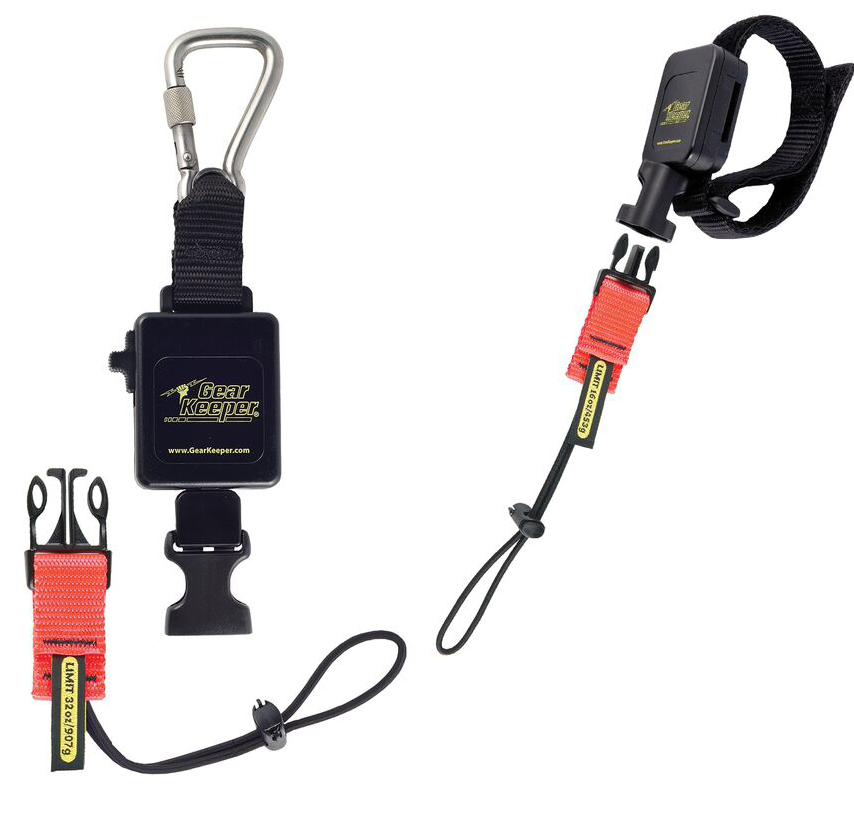
Retractable tethers are designed to help avoid tool entanglement issues when multiple retractable lanyards are in use.
Not all tool tethers are created equal. There aren’t any national standards or requirements on how companies manufacture, test, or rate their tethers or lanyards for work at heights or on wind turbines. Therefore, careful research is required for proper selection, and the right tether will vary per worker and per worksite. Here are some tips to keep in mind.
- First determine whether the tethers being considered for a job have been load tested for a maximum weight rating beyond the rated breaking point to absorb any drop-shock. “Shock absorbing” tool tethers are questionable for ensuring safety because of the wide range of different tool weights used for a lanyard. For example, carabiners should have a load-bearing rate of 500 kg or more with gates that don’t get hung up from a side load.
- Look for tool tethers that have a short retracted length combined with a long, low-force extension. Greater stretch and lower resistance equates to less fatigue. Consider tethers with integrated elastic woven into the webbing for a gentle recoil and minimum resistance. Bungee cord elastic reduces stretch, for instance, and typically causes arm strain when in use.
- Pay special attention to the tool attachment cord, which is typically the failure point of inferior tethers. The lanyard cord should have a tight weave so there’s less chance of wear or snagging. This should also make it easier to thread through a tool’s lanyard loop.
- Check to see if there are any manufacturing controls and/or traceable serial numbers to track the tethers back to their source as a means of ensuring quality and performance.
- Consider the cost. In the wind industry, often you get what you pay for and in this case more expensive tethers tend to reflect better performance and ergonomics.
For a digital copy of the entire June issue of Windpower Engineering & Development, click here.
Filed Under: Safety, Training

